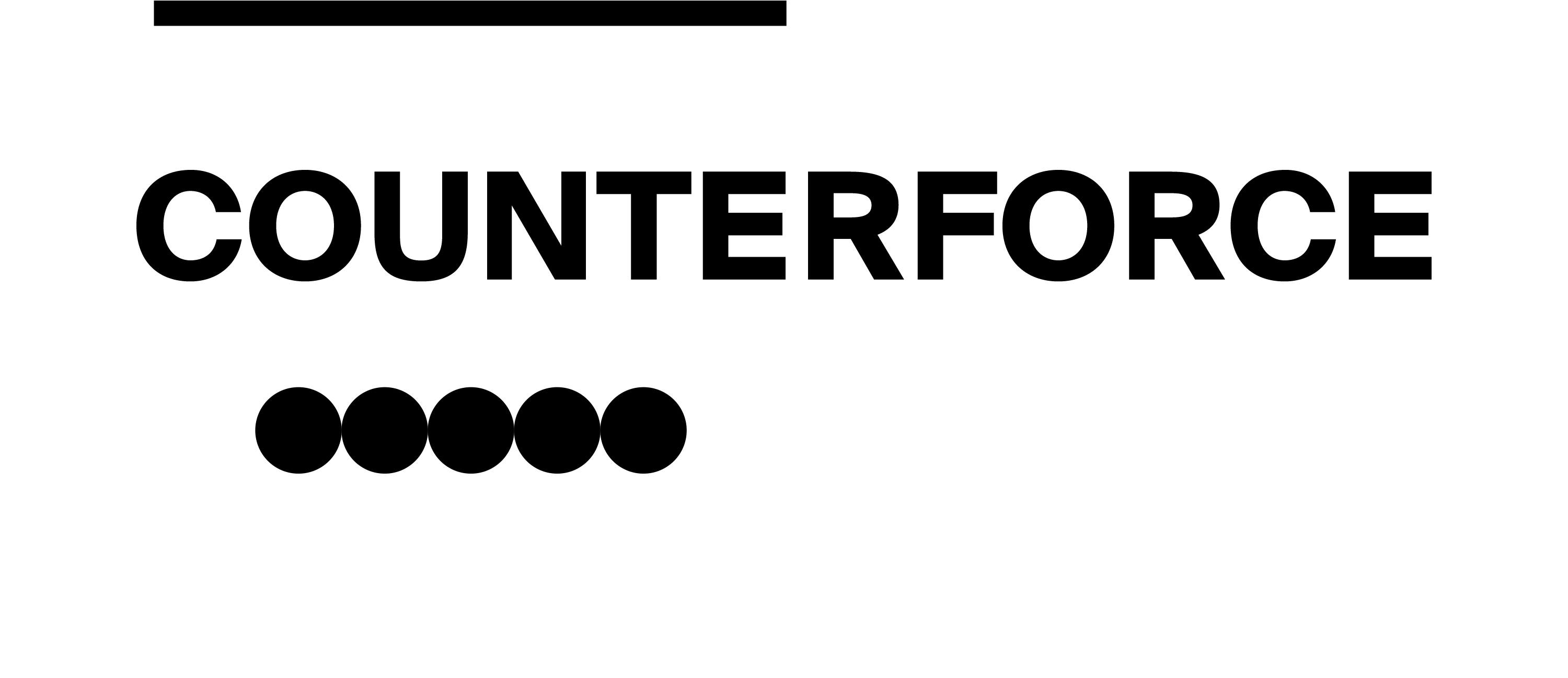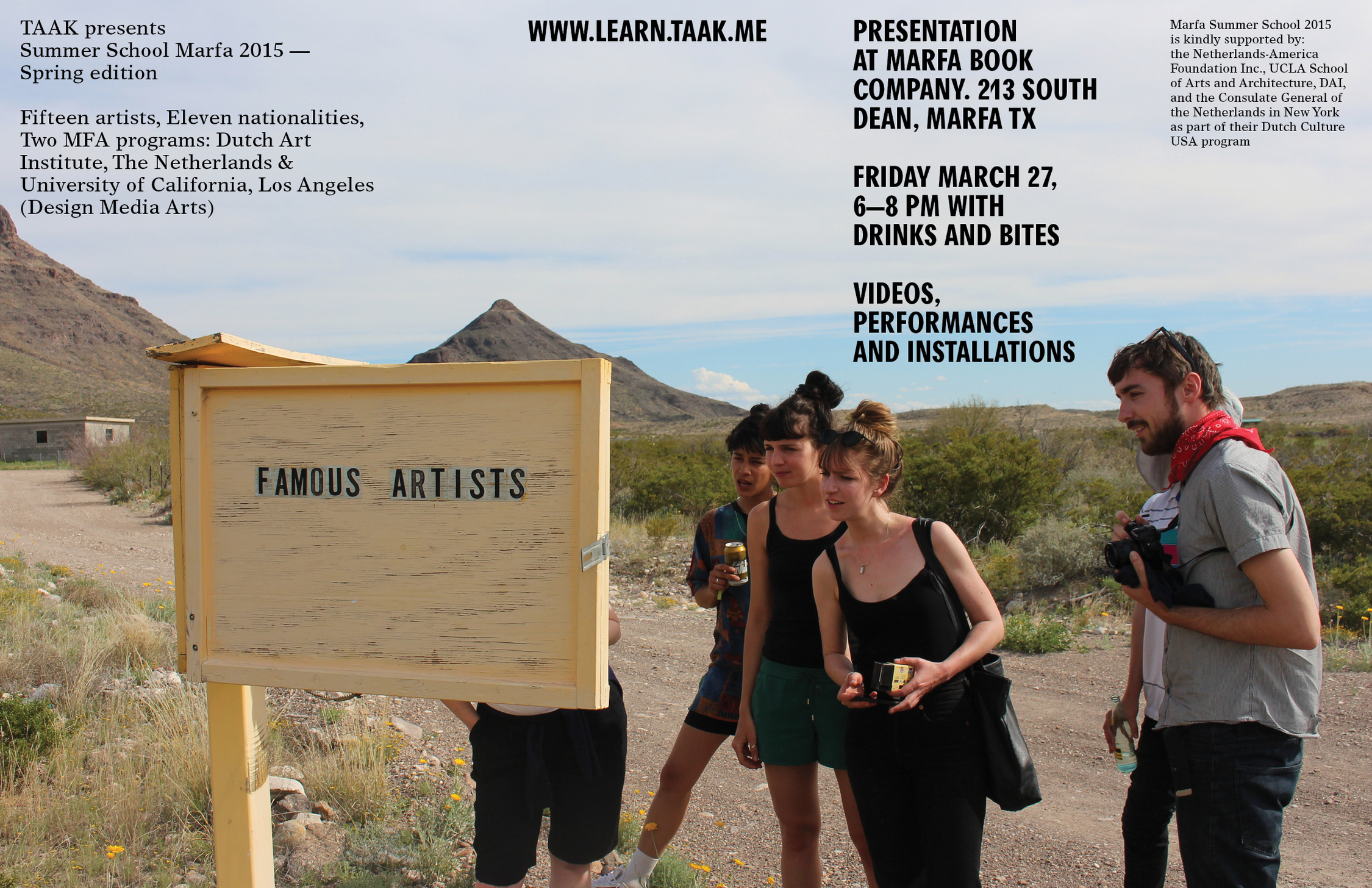
Program TAAK Marfa Summerschool 2015 – March edition
Participating students: University of California, Los Angeles (UCLA): Hsin Yu Lin, John Brumley, Miguel Nobrega, Jane Chang Mi, Katherine Parsons, Theo Trian
Dutch Art Institute (DAI): Maria Barlasov, Michelle Browne, Charlie Dance, Martha Jager, Jammie Nicholas, Marie-Andree Pellerin, Mathilde Sauzet, Melissa Tun Tun
Tutors & organisation:
Building 98: Bonita Barlow (property manager)
Dutch Art Institute (DAI): Jon Mikel Euba, Susan Gibb, Frederique Bergholtz
University of California, Los Angeles (UCLA): Adam Eeuwens and Rebeca Méndez
TAAK: Martine van Kampen and Simone Kleinhout
TAAK Summer School Marfa 2015, Third Edition
Messing With Texas, an eyewitness account by Adam Eeuwens
A trip to Marfa, Texas, and rather than the purgatory of modern day flight, a drive made solo in a small SUV, courtesy of a free rental upgrade thanks to overbooked spring break demand, paid partly with American Express miles, part reimbursed by TAAK Summer School Marfa, in exchange for the role I am to perform as tutor for the first fieldwork trip by the UCLA Arts Center for Design + Environment, a new initiative by professor Rebeca Méndez, that finds her successfully fundraising with her chair of the department and dean of the school to participate with six volunteer graduate students in the program run by the Amsterdam-based cultural platform TAAK.
The road trip begins just around the corner of my home in California, hitting the 10 Santa Monica freeway at the four level interchange of the perpetually gridlocked intersection with the 405, and ends almost an exact 1000 miles east, driven mostly on the same 10 interstate highway, in the wild west of lore, like James Dean’s last film Giant[i] and Javier Bardem in No Country for Old Men[ii]. In a comfortable climate controlled bubble barreling at 80 miles per hour through the Mojavan, Sonoran and Chihuahuan Deserts, landscape backdrops changing from joshua trees to saguaro cactus to yucca bushes in their death bloom, through southern California, Arizona and New Mexico, the dashboard reporting outside temperatures up to 116 degrees, at times interrupted by lightning and torrential rains. Never seen the desert this green. Aided by the excellent map and database of the Center for Land Use Interpretation[iii], exits along the road are revealed to lead to county, state and federal prisons, nuclear energy and waste plants, missile launch sites, open air mines, the site of the first atomic bomb test, industrial agriculture and cattle ranching, military bases, border patrol stations, a gigantic air force plane graveyard, and several counties in multiple states that lay claim to harboring a corridor of death; arid border regions where undocumented migrants cross, and walk through the desert for days in triple degree temperatures without adequate resources, leading to hundreds of deaths a year. This land has a trail of tears in every direction.
At El Paso, TX, the road skirts its sister city of Ciudad de Juarez, a murder capital of the world (8.5 murders a day in 2010), divided by a borderline drawn by the Rio Grande, where the Mexican cell phone towers overpower those of my service with AT&T, my own private little first world problem for which they do immediately text me to warn of international roaming fees if no immediate action is taken. While driving, never having left the country.
Before taking a right at Van Horn, TX, for the last hour ride across a stretch of ‘authentic’ American prairie to my final destination of Marfa, there is a full stop to be made for the Border Patrol at the Checkpoint of the Stars in Sierra Blanca –a dusty town 16 miles from the Mexican border that, despite international treaties forbidding it, is home to the nation’s largest open air sewage sludge dump, where daily from 1992 to 2001 45 sludge train cars dubbed by the Texas Observer ''the poo-poo choo-choo'' completed a 2,065-mile journey by dumping 250 ton of New York City sewage cake on the West Texas land, earlier in the 20th century already the scene of the Dust Bowl. The known list of toxins the sludge cake contains counts over 68,000, from cyanide to dioxin to e-coli, left to dry and fly of as dust over Texas and Mexico, a crime against the environment and humanity a long line of governors like GW Bush still encourage as good business, public health be damned. Long train caravans accompany one throughout the ride through the southwest, their horns and rumblings part of the scenery, the industrial arteries of our civilization, its payload the price we pay.
During the ‘citizen check’ the Border Patrol agent eyes my foreign passport and permanent resident Green Card suspiciously and is borderline rude, part of his training to take charge and keep control, entitled by an absolute power to fuck with my destiny if shown just the slightest contempt. I learn later, a belgian shepherd dog is nearby sniffing vehicles specifically for hidden aliens, but also for that medical marijuana from California or the recently legalized product from Colorado and Oregon. Possession is still a federal crime, especially not to be messed with here in Texas. Ask Willie Nelson, Fiona Apple and Snoop Dogg, the stars arrested at this checkpoint and finding themselves up against federal charges of felony-level drug possession. Thank good old west coast space age innovation for its vacuum sealed, chocolate brownie, thc-laced edibles, however a liberty ignorantly taken once but too intimidated by the ruthless consequences to dare to repeat, a restriction on my personal choices and freedom enforced by this loony lone star state that thumps its chest for being the most freedom loving of them all, yet limits mine as it has its for-profit private prisons to fill. In this militarized border zone my good fortune of course is that I am white and citizen of a nation that is part of the favorable equation.
I drive down this metaphorical colon of the United States again on June 19, 2015, now paid to coordinate the two-week stay of six students from Cooper Union, New York and six students from the Sandberg Instituut Amsterdam, in the program run by the TAAK Summerschool Marfa, the third year in a row that the Dutch cultural platform has organized this fieldwork studio for art academies. TAAK’s mission is to initiate innovative art projects and educational programs relating to social issues such as ecology, urbanization, social design and human rights, and is embodied in their Summer school program. The students and tutors stay at Building 98 in Marfa, an old army barracks built around the 1900’s for bachelor officers, a simple concrete and adobe structure with an enclosed courtyard where the TAAK students sleep in tents and have one shower and two bathrooms to share among each other. There is an officer’s bar (off bounds to the students) where once General Patton held court, and drank whiskey until his bulldog would cry to signal to his boss he was getting too drunk. The bar comes complete with murals painted by captured German soldiers during World War II. In the ballroom we may use, a majestic grand piano and glorious Eames Lounge Chair supply superb props. Proprietor of Building 98 is the wonderfully eccentric Mona Blocker Garcia, a grand dame whose family has been rooted for generations in Texan soil, and who is the president of the International Woman’s Foundation. Its vision for the Foundation in the storied compound is ‘to develop a nurturing and protective haven, especially for mature women, who are underrepresented in the artistic community, so they can fulfill their true promise and potential.
The trip in March included six graduate students from UCLA School of the Arts and Architecture, department of Design Media Arts, where my wife Rebeca Méndez is professor, which explains my presence, as where she is, I am often in the vicinity, closely involved in projects we pursue together as partners in our design studio, art practice, and the startup of the aforementioned Center for Design + Environment, which aims to add fieldwork such as this Marfa trip to the media arts curriculum. The Center under construction aims to ready artists and designers for environmental change and the way we live. Five of the UCLA students rented a similar small SUV together and drove 15 hours straight to arrive Sunday morning at 3am, and a sixth student I pick up at El Paso International Airport, still a 3-hour drive plus timezone change from Marfa. Meanwhile the nine students following a performance related art and research MFA program at the Dutch Art Institute (DAI), organized by a curatorial production house called ‘If I Can’t Dance, I Don’t Want To Be Part Of Your Revolution’, based in Amsterdam, have travelled across the Atlantic Ocean with its program director Frederique Bergholtz and two tutors; the Basque artist Jon Mikel Euba and Australian curator Susan Gibb. The Dutch TAAK program coordinator Simone Kleinhout and TAAK curator Martine van Kampen have arrived a day earlier from Amsterdam, and as a courtesy set up all the tents, and their fair western european winter complexion has sunburned under the merciless Texas sun. They cook the first dinner, which thereafter is done by a revolving trio of students. In March it was too cold and it rained too much to stay in the tents, most sleep spread out on the wooden floor of the ballroom, 15 strangers camped out for 14 days and nights, having to share and make do with less resources and less than ideal circumstances at hand. The lock of the communal toilet breaks the first day.
[i] http://www.avclub.com/video/james-deans-last-movie-was-marfa-texas-first-holly-83063
[ii] http://www.npr.org/2011/07/15/138163048/on-location-50-years-of-movie-magic-in-marfa-texas
[iii] www.clui.org

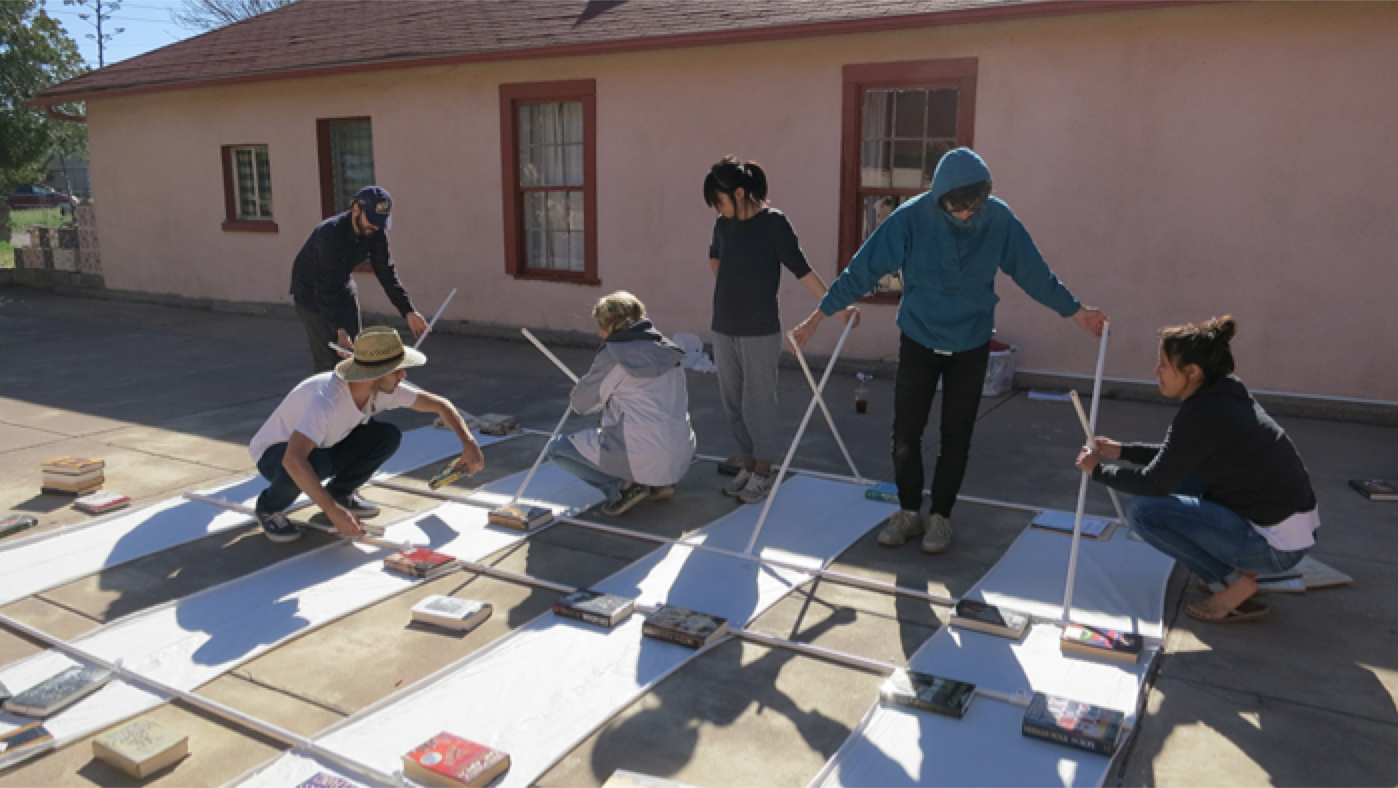
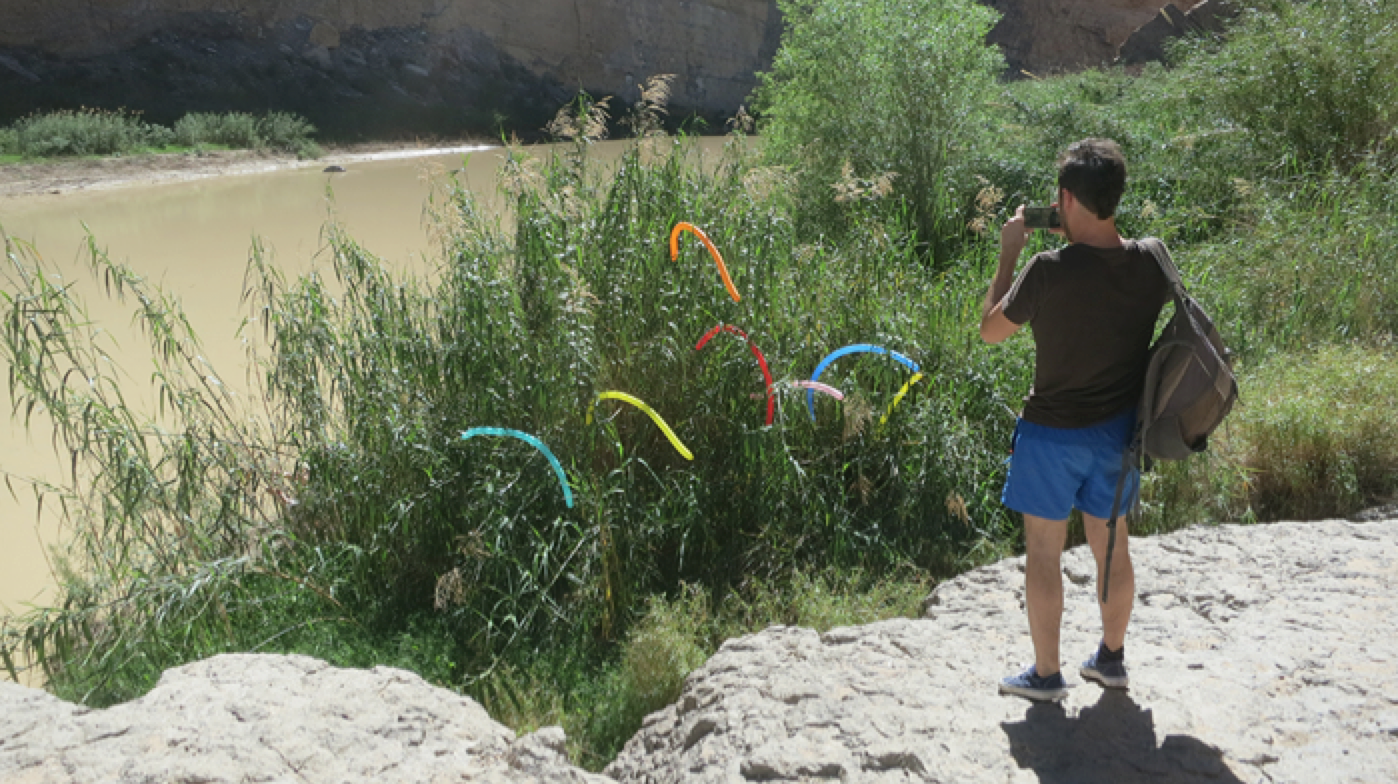
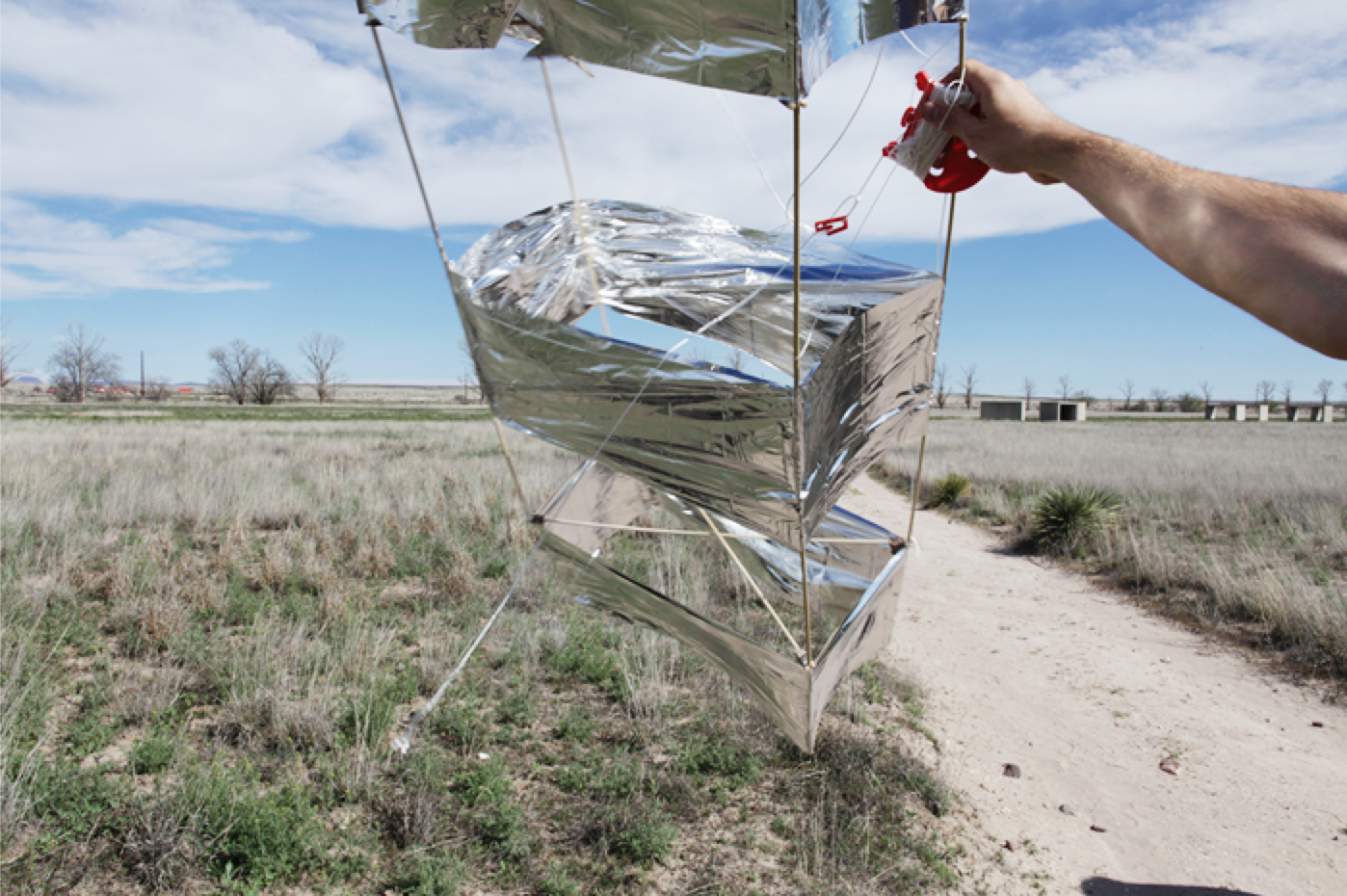
previous
next
